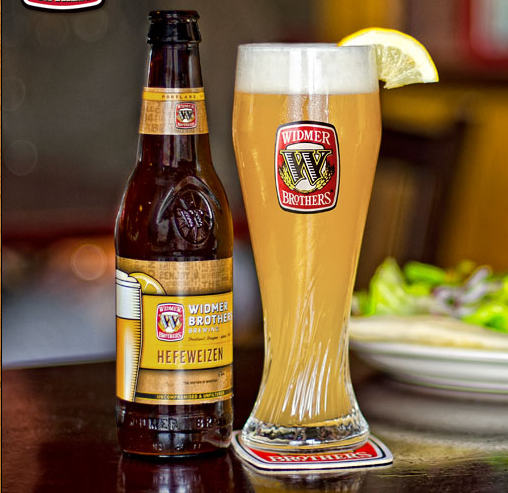I was able to keep the mash temperatures surprisingly stable, never wavering from the mid to high 140's. Considering the relatively low temperature, I opted for a 90 minute mash, so this ought to be a highly fermentable wort. The combination of a 90 minute mash and a 90 minute boil made this a long if uneventful brewday--7.5 hours as opposed to 6. If a picture is worth a thousand words, here are a few to fill the remaining space on this post:
Fermentation:
I harvested the Whitbread yeast (Wyeast 1098) from last week's brew--the American wheat ale--to pitch today. I left enough beer on top of the yeast for maybe 1/3 to 1/2 a gallon total volume. I swirled this up and poured it into a gallon jug to let the trub settle out.. This never really happened, so I just used the yeast slurry as is. The Mr. Malty yeast calculator recommended only about .1 gallon so I poured the other .5 gallon into a smaller jug and stored it in the refrigerator. I'm not sure if I'll have anything to brew with this soon, but it's better to have it and not need it than to need it and not have it.
Pure O2 for 45 sec., 1/2 tsp yeast nutrient, .1 gal yeast slurry pitched at 60F, and placed in fridge set to 64F.
3 Days: Temperature raised to 70F. It looks like the krausen is starting to drop, but there is still plenty of yeast in suspension. I would have liked to do this a day or two earlier to make sure it gets as dry as possible (unlike the wheat sitting next to it), but that didn't work out.
1 Week: Racked onto 2 oz. medium toast American oak cubes. The recipe called for 2 oz. French oak chips but I didn't have time to get to the homebrew shop with the full selection so I couldn't get those. It's tough to tell how the flavor will translate. American oak is supposed to be more bold than French, while chips are supposed to extract the flavor more quickly than cubes. After one week I'm hoping the flavor is noticeable but not overpowering so I can stick to my planned schedule.
The final gravity was 1.013, pretty much right on the money, so no worries regarding the yeast health or fermentation temperature. It's interesting to note that the uncarbonated gravity sample feels so much thicker than that of the wheat ale which finished at 1.017. You would expect that low gravity implies less dissolved sugars implies thinner mouthfeel. However ethanol is significantly lighter than water--.794 SG--so the stronger beer actually has more dissolved sugar than the FG comparison would suggest. If we take into account the starting gravity, we find that the real extract (dissolved sugars instead of net density) of both beers is actually very similar at about 6 degrees Plato. (Here is a great article from BYO magazine regarding the various ways to measure beer strength.) So why does the Arrogant Bastard still feel significantly thicker? Well there are a million things that go into mouthfeel besides dissolved sugar mass: sugar species (simple sugars vs. longer dextrins), longer chain carbohydrates (for example beta-glucans), protein content (especially from non-barley grains), hop resins, alcohol level, other yeast byproducts (glycerol comes to mind), tannins (from hops, grain, oak etc.), carbonation and more. These other pieces can be hard to measure and their effects in sum are poorly explained in homebrew literature. This is one of the things I would really like to understand as I experiment more. But at the end of the day, it's still too early to tell because after carbonation it's a whole new ballgame. Stay tuned for the tasting notes to see how it turns out!
2 Weeks: The oak isn't quite as bold as I hoped, but it's definitely there so I kegged it anyway. Since the last update, I listened to the Brew Strong episode on mouthfeel and John Palmer mentioned that pH can affect the mouthfeel. Well when I measured the pH going into the keg, I found that it was 4.58. That could possibly be a reason it seems so much thicker than the over-acidifed wheat ale. The pH of a finished beer should be below 4.5 to ensure microbial stability (fancy speak for discouraging foreign bacteria), but up to that point, a higher pH is generally preferred for flavor. I couldn't find much information on what goes into this final pH, besides water alkalinity and the speed and ferocity of the fermentation: ales tend to have faster fermentations and higher pH than lagers, with quicker ales edging close to 4. Alkalinity was pretty low here, but maybe the low temperature contributed to the higher pH? That's pretty much speculation at this point, and in the grand scheme of things (and by that I mean how this beer turned out) it's not really a big deal either way.















